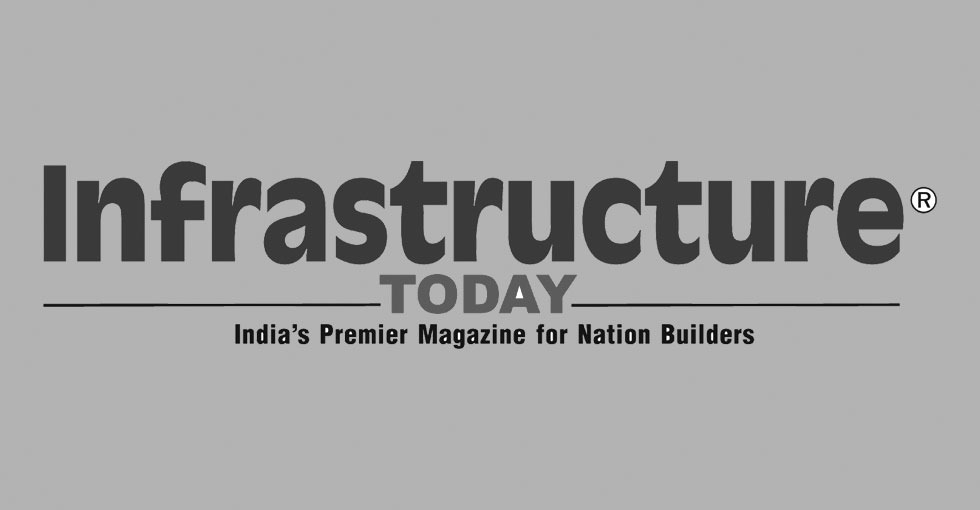Less than 20 per cent of the wastewater discharged by households, and 60 per cent of industrial wastewater, is treated in India. This situation has to change, say SHISHAM PRIYADARSHINI and AMISH SHROFF.
FlashNews:
Trimble MD champions digital solutions for industry growth at RAHSTA
Vipin Sondhi: Indian infra booms with road construction opportunities
RK Pandey promotes safe road development at RAHSTA launch
RAHSTA to pave the way for innovation in road construction: AK Singh, NHAI
Road construction leaders launch RAHSTA Expo 2024 in Delhi
Road construction industry launches RAHSTA Expo 2024 in Delhi
Road construction industry to launch RAHSTA Expo 2024
Shapoorji Pallonji divests Gopalpur port for Rs 33.5 bn
15th Cement EXPO to be held in March 2025 in Hyderabad
IIFCL raises Rs 1,500 crore through bonds/debentures
Metro Rail sustainability suffering from affordability & connectivity
Dr E Sreedharan, India’s ‘Metro Man’ & India’s Top Metro Rail CEOs converge in Mumbai for CW Metro Rail Conference
Road Contracts awarded drop to less than half!
Synergy Steels clinches Award for Best Environment & Pollution Control Practices, 2023
Will QCBS phase out L1 for Infrastructure Procurement?
Noida Airport to soon link with rail routes
E-Mobility: Delhi to roll out 500 low-floor electric buses
First phase of Dholera Smart City nearly completed
PM Modi launches Varanasi Smart City website
Tag: wastewater treatment
SPML Infra bags orders worth Rs 8000 crore
New orders worth Rs 800 crore were received by SPML Infra Ltd for power substation, rooftop solar power plant, water & wastewater treatment and municipal solid waste management projects from different states in India.
We have proposed a full-fledged Ganga River Basin Act
We have suggested a series of recommendations based on the basic principles of ecology-based river management of the Ganga. The implementation and follow-up has to be done by the Central government in collaboration with the State governments. Our grand vision is as follows:
Water use patterns will lead to a severe crisis by 2050
Rishabh Sethi, Chief Operating Officer, SPML Infra Limited, shares his views on the huge scope of growth in the country for water recycling and purification of drinking water, and his company´s upcoming projects in this space.
Government should take holistic approach
In order to secure future water needs, the government will have to play a major role, both functionally and financially. Technologies focus on the techno-ecoÂnomic mix for fulfilment of viability requireÂments and also technical requireÂments for specified re-use specified for industrial and domestic sector. Uniform standards are adoÂpted for water quality parameters for the specified re-use to enable the client/contractor to choose the optiÂmum technology at a rational cost.
How zero liquid discharge plants work
Zero liquid discharge plants minimise the consumption of freshwater and by the reuse of wastewater it helps relieve freshwater availability limitations in places where it is scarce or expensive. Ganesh Pangarkar explains the technology and process. Power production has an impact on the environment. Besides the fuel gas, other emissions leave the power production process, noteworthy among which is water loss in the water/steam cycle.
PPP in warehousing will be transformative: Experts
Several investors have exited the rural infra segment over the past few years. because they could not achieve the scale they wanted to, perhaps because of wrong strategies. This year, can it be the switch that the government can use to trigger economic growth back on track?
Desalination: Our cities can do it, too
Improved and more efficient technology in desalination, and increased volumes may mean better viability for desalination.
Urban Wastewater Management: A much needed delivery system
The treatment capacity from the sewage generation from Class I cities and Class II towns is less than 30 per cent. About 80 per cent of domestic water goes out as wastewater.
Vox Pop: Experts provide solutions for urban wastewater management
From what model of PPP will work in our urban wastewater management to how they can move from a mostly secondary treatment to tertiary and make water viable, policymakers, city administrators and wastewater practitioners offer solutions.





